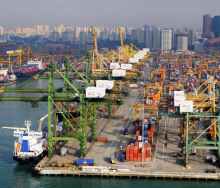Local truck drivers and aspiring job seekers looking to help plug the gap of some 80 000 truckers needed in the United States should familiarise themselves with state-by-state requirements that regulate road freight in the US, says logistics executive Gavin Kelly.
Responding to questions received from existing drivers, parents of career seekers, and middle-aged people looking for employment opportunities abroad, the CEO of South Africa’s Road Freight Association (RFA) confirmed that there was high demand for truckers in America at the moment.
“It’s mostly seasonal and is based on agriculture.
“There is a huge amount of grain and various crops that need to be harvested, and they don’t have the capacity to get it done.”
Kelly said America’s driver need was usually only for a couple of months and that it was surprisingly easy to get a licence – depending on the issuing state.
Moreover, experienced drivers with clean records in particular can expect good pay.
In April this year multinational retailer Walmart said they were prepared to pay up to $95 000 or R1 579 014 a year for entry-level drivers.
First-year salary could increase to as much as $110 000 (R1 828 332), while veteran drivers could earn even more, Walmart said.
What’s more, road load restrictions in the US, Kelly explained, meant drivers only needed a C1 licence (Code 10), for trucks with a vehicle mass of 3 500 -16 000kg.
“In the States they only have single combinations (a rigid truck or horse with a trailer), and not interlinks as we have in South Africa – bar a few exceptions.”
He added that thanks to local licensing information making it very clear what drivers can and can’t drive, some states might easily issue a licence to a driver, once again depending on experience and a clean record, whereas others might require pre-assessment.
Kelly stressed that it was these requirements that job-seeking drivers ought to clear up through the transporters they were approaching for work abroad.
They include regulations against possible conditions that people may suffer from – epilepsy, Alzheimer’s, Parkinsons – as well as age limitations, poor eyesight, and the like, which may preclude drivers from working in countries like the US.
“These things depend very much on the employer, the cargo, and the country or state involved. Generally it’s not difficult.”
Getting into the United Kingdom, Kelly said, was even easier.
“They have formal links with South Africa and the Department of Transport, and to get your licence converted in the UK is a straightforward, simple process as they have the same codes as us.”
Once again though, as with the case of a 59-year-old man who approached Freight News for information about trucking abroad, Kelly said it was a case-by-case situation, most likely depending on the employer.
“Some countries and states may have regulations prohibiting people over a certain age from driving a heavy-load vehicle. Here we don’t have that.”
Responding to an enquiry from a parent eager to help her recently matriculated son still sitting at home, Kelly advised that solid training, with some driver experience, would be the way to go.
“I would recommend that youngsters wanting to go and drive trucks abroad should first get their normal licences (code 8), move up to the next level (C1), and get some experience driving trucks up to 16 tonnes, generally your rigids – six and nine tonners.”
Should it be necessary, a further licence upgrade to EC-level (code 14) could be considered for driving large, heavy-load rigs.













